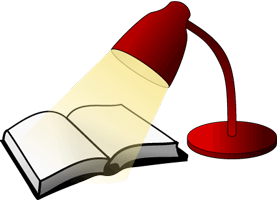There are four key elements when it comes to telling a story: summary, plot, structure, and suspense. However, as all of them are interrelated and even interdependent, it’s sometimes difficult to tell them apart.

In this post, I’ll analyze these elements separately to discover their functions and peculiarities.
Summary
Summary refers to the main events of the narrative presented in chronological order. This sequential type of organization provides the writer with a clear answer to two questions. What’s the story about? What does it tell the reader? As we’ll discuss in the next section, once those questions have been answered, the author can break the chronological order of narrative discourse and choose the one that best fits his or her story.
Plot
Summary and plot are the elements that most often lead to confusion as both refer to the story’s content. Anyway, there’s a fundamental difference between them. In the plot, the sequential order of the summary has already been rearranged by the author.
For example, let’s consider a thriller with a summary like this: A policeman murders a woman and hides her body. Later, the police find the corpse, and the murderer himself participates in the investigation while destroying any evidence of the crime and erasing his tracks until one of his coworkers finds out he’s guilty.
It could be the story is presented in the same order both in the summary and in the plot, but it’s probable that the sequence of events is altered in the plot as you can observe in this example:
“The police find the body of a murdered woman and initiate the investigation. The process is really complex; it feels like the murderer is always one step ahead of them as they fail to find any clues. Luckily, one of the policemen realizes the murderer is a coworkers who has been concealing evidence of the murder. At the end of the story, there’s a flashback which can help the reader reconstruct how the murderer has been erasing his tracks since the very first moment of the murder.”
As you can see, the plot differs from the summary in that the order in which events are presented isn’t necessarily chronological. Besides that, the plot defines the structure which is our third key element.
Structure
Structure is another basic element in every story. The structure or framework is the physical version of the plot. It must contain the number of chapters or scenes, their distribution and length, the part where a flashback is needed, etc.
Suspense
Suspense is to be found in the information provided throughout the story in order to engage the reader, but it is also found in the way this information is managed. Sometimes, suspense is built when the writer conceals certain data. Following the example above, the writer doesn’t reveal the identity of the murderer until the end of the tale. At other times, the reader knows from the beginning who the murderer is. In this case, suspense lies in knowing whether the police are going to find it out. Questions such as “Will the culprit get away with it? Will this character overcome this bad streak? Will he survive? Why has he done this and that?” can work very well as the axis of suspense. The most important thing is to know which means of creating suspense you want to utilize.
Practical Exercise
In order to reflect on these four concepts and put them into practice, I suggest the following activity: choose a few stories you like (they can be films, short stories, novels, etc.) and write down each story summary and plot. Are they similar, or are there differences between them? If they are different, explain why.
At this point, it’s also recommended that you try to make note of the structure of the stories. You’ll find it very useful, and it will help you reflect on these two questions: How does the author keep up suspense? What is the axis of suspense? In other words, what is the question that makes you follow the story from beginning to end?
Happy writing!
Related Posts
How to Write a Short Story
How to Name your Characters
The Key Elements of the Creative Process
 This site uses cookies. By continuing to browse the site, you are agreeing to
This site uses cookies. By continuing to browse the site, you are agreeing to 



so nice thanks
Thanks…very useful